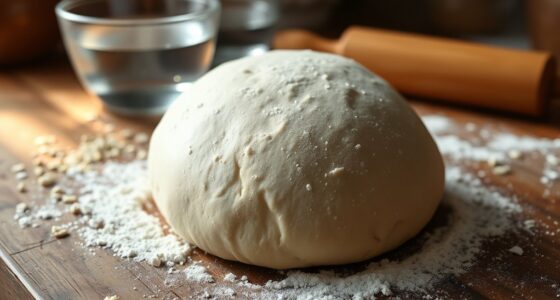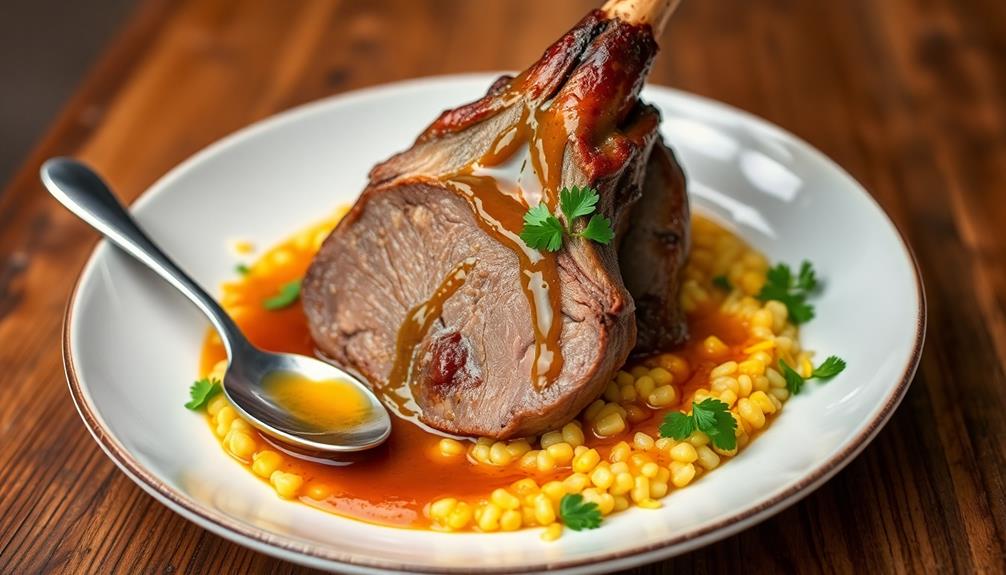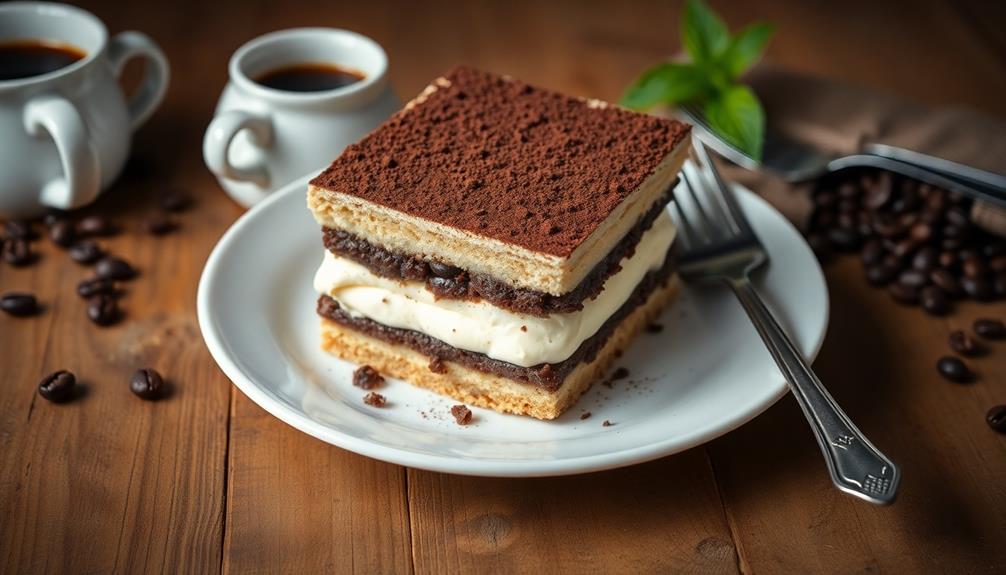Whipped lardo is an incredible Italian spread that'll wow your taste buds with its rich, savory flavors. For centuries, folks in Tuscany have been curing pork fat with herbs and spices, then whipping it into a decadent, creamy treat. It's a wonderful way to minimize food waste by using every part of the pig. Though lardo has regional variations, the end result is always divine – perfect for topping bread, veggies, and pasta. If you continue exploring this tasty Italian specialty, you'll discover even more ways to elevate your cooking and impress your guests.
Key Takeaways
- Whipped lardo is an Italian specialty made by curing and rendering pork fat, then whipping it to achieve a creamy, spreadable texture.
- The traditional curing process with salt, herbs, and spices infuses the lardo with a rich, savory flavor profile.
- Whipped lardo can be used as a topping for bread, vegetables, and pasta dishes, adding a burst of umami to various culinary creations.
- The rendering and whipping process creates a light, airy texture, making it an ideal spread or dip for appetizers and snacks.
- Whipped lardo is a versatile ingredient that showcases the culinary ingenuity of Italian cuisine, minimizing food waste and elevating simple dishes.
History
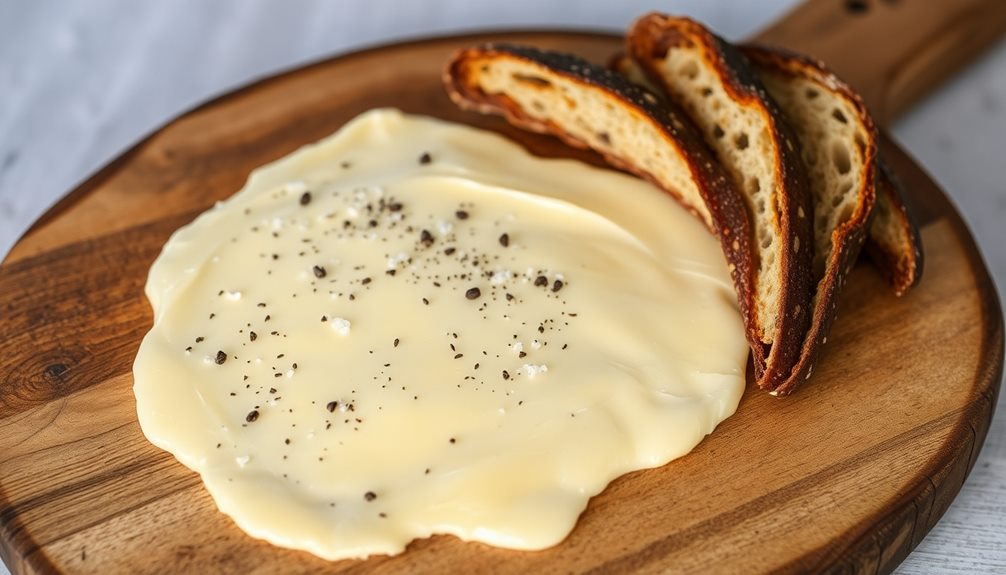
Where did lardo, the rich and flavorful Italian cured pork fat, come from?
Lardo has a long and storied history in Italian cuisine, tracing its roots back centuries. In the Tuscan region of Italy, lardo was traditionally made by curing pork fat with a mix of herbs and spices, then aging it to develop its signature creamy texture and savory flavor.
This centuries-old process was a way for Italian families to make the most of every part of the pig, ensuring no food went to waste. Lardo was often used as a cooking fat, adding depth and richness to dishes.
Over time, it became a beloved specialty, with different regions developing their own unique recipes and traditions around this versatile ingredient.
Today, lardo is still prized in Italy and around the world for its incredible taste and texture. Whether spread on crusty bread or used in cooking, this historic Italian delicacy continues to delight and inspire food lovers everywhere.
Cooking Steps
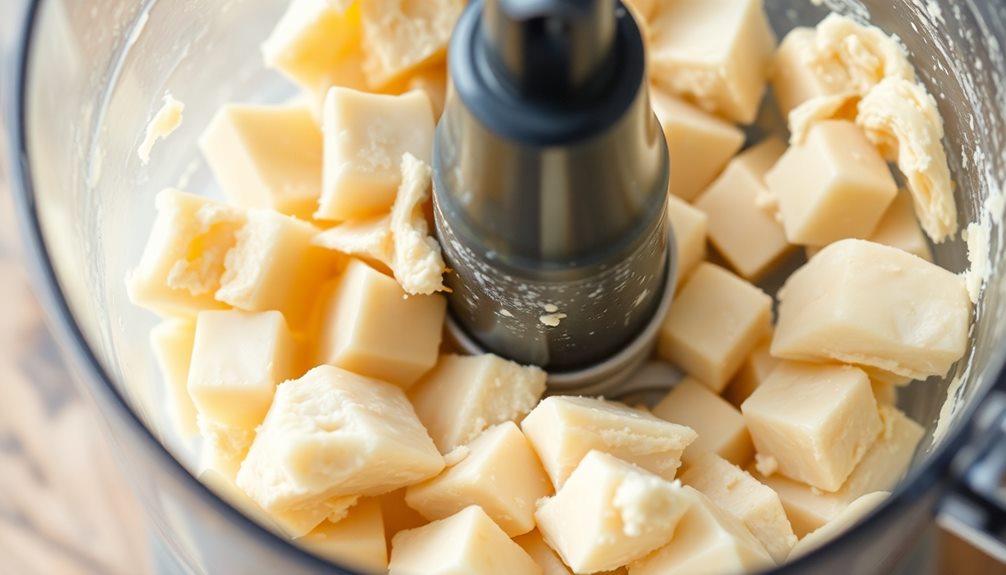
To make the whipped lardo, begin by gathering your ingredients. You'll need a block of high-quality lardo, which is an Italian cured pork fat.
Grab a food processor or blender to whip the lardo into a smooth, creamy consistency.
Next, start by dicing the lardo into small pieces. This will help it blend more easily. Toss the lardo cubes into your food processor and turn it on. Let it run for a few minutes, scraping down the sides as needed, until the lardo transforms into a light, fluffy spread.
Once it's whipped to perfection, transfer the lardo to a bowl or jar. You can season it with a pinch of salt and a sprinkle of black pepper, if you'd like.
The whipped lardo is now ready to enjoy as a decadent topping for crusty bread, roasted vegetables, or even a simple pasta dish. Just be sure to savor every rich and savory bite!
Step 1. Cure Lardo With Salt and Herbs
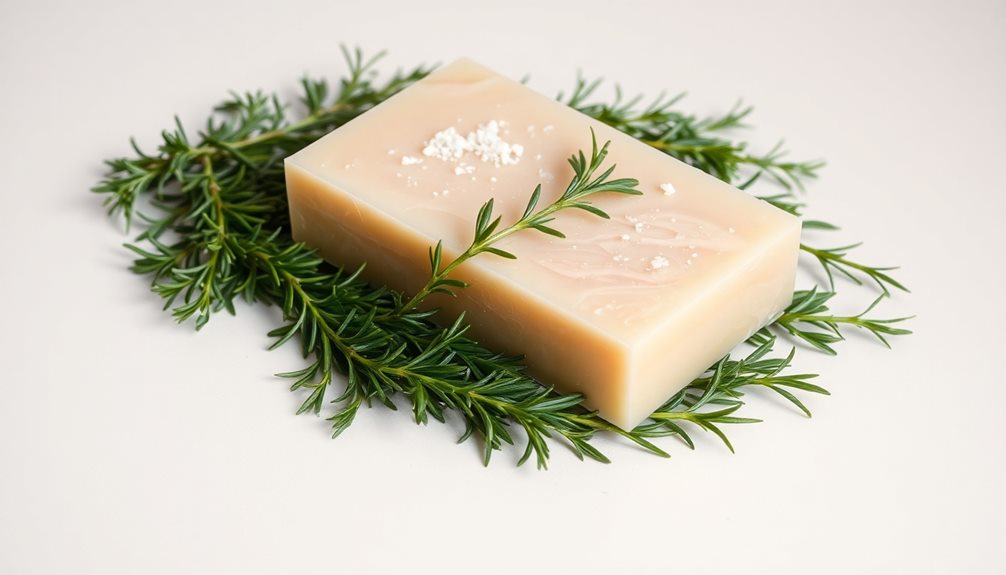
After trimming the lardo block, it's time to cure it with salt and herbs. You'll need to rub the entire surface with a generous amount of coarse sea salt. Don't be shy – make sure to evenly coat every nook and cranny.
Next, sprinkle on a blend of dried herbs like rosemary, thyme, and oregano. The salt and herbs will work together to draw out moisture and infuse the lardo with mouthwatering flavor.
Once the lardo is thoroughly seasoned, place it in a container with a tight-fitting lid. Refrigerate it for at least 2 weeks, flipping it over every few days. This curing process allows the salt and herbs to penetrate deep into the fat, transforming the texture and taste.
After 2 weeks, rinse off the excess salt and herbs, then pat the lardo dry. It's now ready to be thinly sliced and savored on crusty bread, roasted vegetables, or anything else your heart desires. Get ready for an explosion of rich, savory delight!
Step 2. Slow Render Lardo in Oven
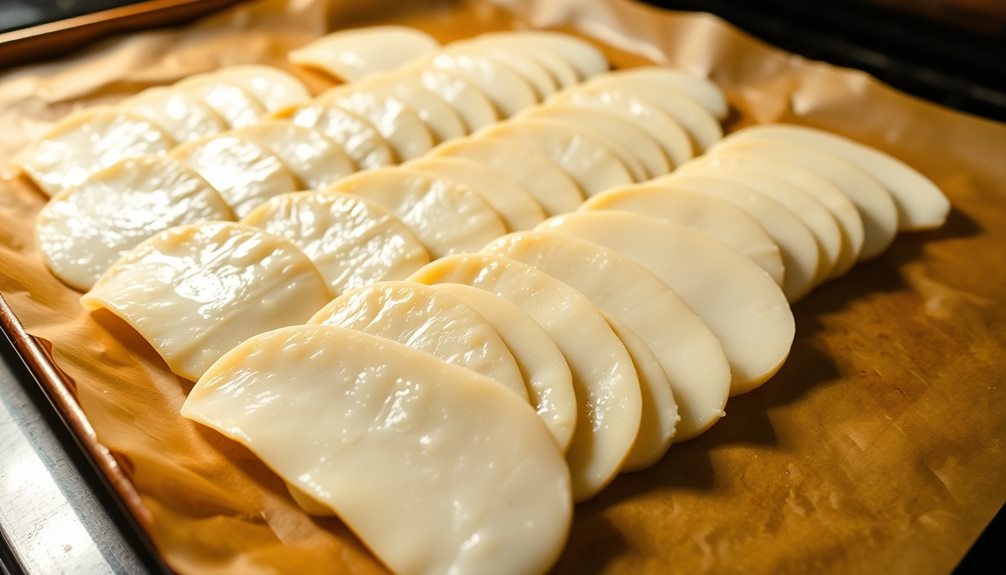
Once the lardo has finished curing, it's time to render the fat in the oven. This slow cooking process will transform the solid blocks of cured pork fat into a smooth, spreadable delight.
Preheat your oven to a low 275°F (135°C). Carefully place the lardo pieces onto a rimmed baking sheet, making sure they don't touch. Slide the tray into the oven and let the lardo work its magic for 2 to 3 hours, or until the fat has fully melted and rendered down.
As the lardo cooks, your kitchen will fill with the most tantalizing aroma. Be patient – the slow and steady heat will coax out all the rich, savory flavors.
When the lardo is silky and liquid, remove the tray from the oven. Use a slotted spoon to transfer the rendered fat into a clean bowl, leaving behind any browned bits or impurities.
Let the lardo cool slightly before whipping it into a fluffy, spreadable consistency. Now you're ready to enjoy this decadent Italian specialty!
Step 3. Whip Rendered Lardo Until Smooth

With the lardo rendered, it's time to whip it into a smooth, spreadable consistency. Grab your stand mixer or a handheld electric beater and get ready to work some magic.
Start by placing the warm, rendered lardo into the mixing bowl. Turn on the machine and let it go to town, whipping the lardo until it transforms into a light and fluffy spread.
As the lardo whips, you'll notice it starting to lighten in color and become silkier in texture. Keep mixing for several minutes, stopping to scrape down the sides of the bowl as needed, until the lardo is completely smooth and creamy.
This process helps incorporate air into the lardo, making it lighter and more spreadable.
Once you've achieved the perfect whipped texture, your lardo is ready to be enjoyed. Spread it generously on crusty bread, use it as a savory topping for roasted veggies, or simply enjoy it on its own as a decadent treat.
Step 4. Chill Whipped Lardo Until Set

To ensure the whipped lardo holds its light and airy texture, chill it in the refrigerator until it's set, about 1 to 2 hours.
As the whipped lardo cools, the fat will solidify, creating a smooth, spreadable consistency. This step is crucial, as it allows the lardo to maintain its fluffy, cloud-like texture.
Similar to the efficiency of geothermal heat pumps, which rely on stable temperatures for optimal performance, the cooling process for whipped lardo is essential for achieving the perfect consistency.
Once the lardo is chilled and set, it's ready to be enjoyed!
Spread it onto crusty bread, crackers, or use it as a topping for roasted vegetables or meats. The cool, creamy lardo will melt deliciously on your tongue, offering a rich, savory flavor that's truly irresistible.
Step 5. Serve Whipped Lardo on Crusty Bread
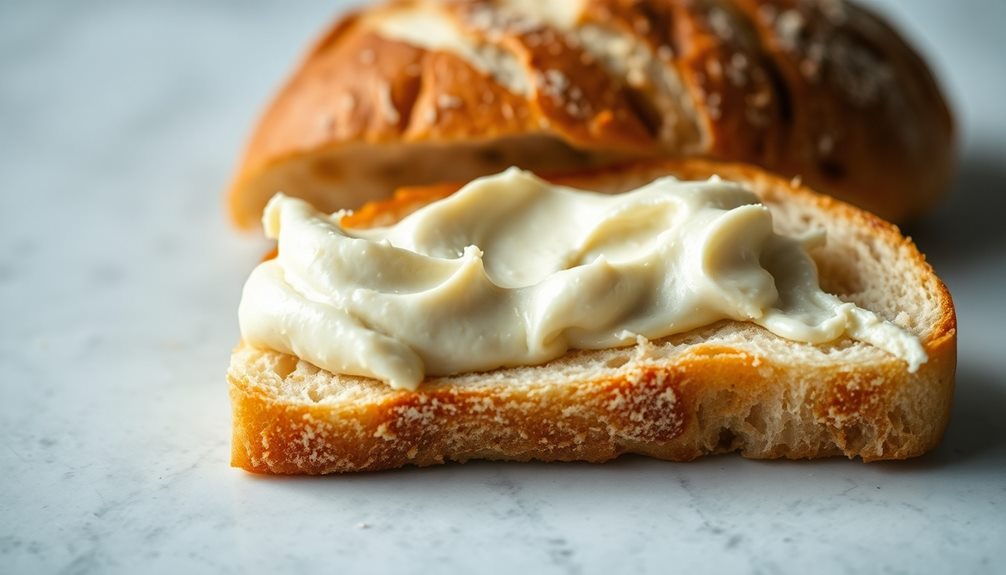
After chilling the whipped lardo until it's set, you're ready to start serving it. Grab some crusty, rustic bread and get ready for a flavor explosion!
Tear or slice the bread into bite-sized pieces, creating the perfect vessel for the creamy, rich lardo. The contrast between the crunchy bread and the smooth, savory lardo is simply divine.
Gently spoon or spread the chilled lardo onto each piece of bread, making sure to cover the surface evenly. The cool, whipped texture will melt on your tongue, releasing the pure, porky goodness. You can even add a sprinkle of freshly cracked black pepper or a drizzle of high-quality olive oil to elevate the flavors. For an extra savory kick, consider topping the lardo with thin slices of Vietnamese beef jerky. The combination of the rich, creamy lardo and the umami-packed beef jerky creates a flavor explosion in every bite. The crispy texture of the jerky also adds a delightful contrast to the smooth lardo, making it a truly indulgent and satisfying snack.
Serve the lardo-topped bread as an appetizer or a snack, and watch as your guests can't resist going back for more. The combination of the crusty bread and the indulgent lardo is sure to leave them craving for another bite.
Final Thoughts
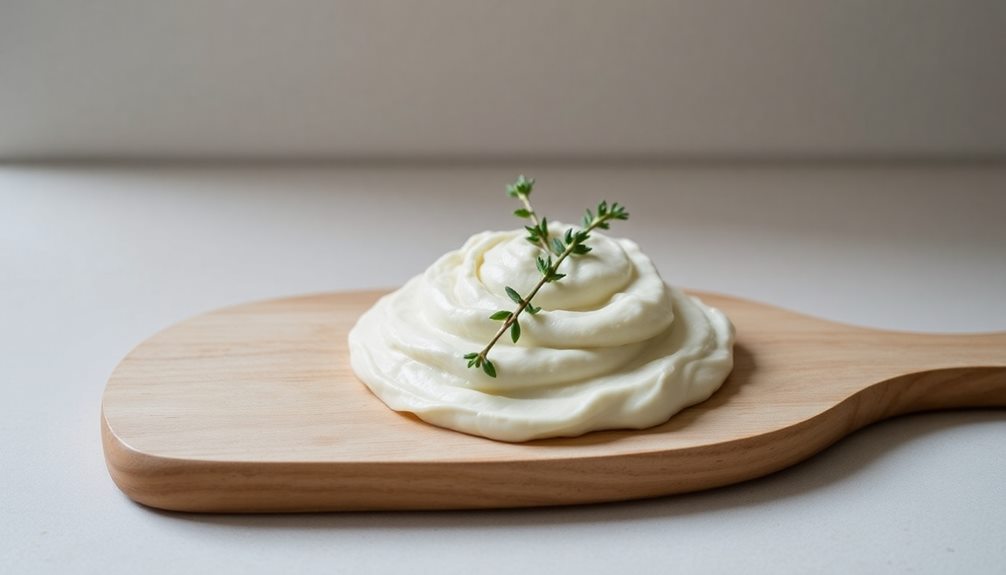
Whipped lardo, the unsung hero of Italian cuisine, deserves a spot in every discerning palate's repertoire.
This rich, savory spread may not be the most glamorous ingredient, but it packs a flavor punch that'll have you coming back for more. Once you've tried it, you'll wonder how you ever lived without it.
Spread it generously on crusty bread, and you've got a snack fit for the gods.
Or try it as a topping for roasted veggies, grilled meats, or even pasta. The possibilities are endless!
The creamy, buttery texture and salty, umami-packed flavor will elevate any dish.
Frequently Asked Questions
Is Whipped Lardo Safe to Consume During Pregnancy?
While whipped lardo can provide a rich, savory taste, it's best to consult your healthcare provider during pregnancy. They can advise if consuming this pork-based spread is safe for you and your baby's well-being.
Can Whipped Lardo Be Used as a Substitute for Butter in Baking?
Yes, you can use whipped lardo as a substitute for butter in baking. It'll add a rich, savory flavor to your baked goods. Just be sure to adjust the amount, as lardo is typically more flavorful than butter.
How Long Can Whipped Lardo Be Stored in the Refrigerator?
You can store whipped lardo in the refrigerator for up to 2 weeks. Keep it tightly covered to prevent it from drying out or absorbing other flavors. Enjoy the rich, savory spread within that timeframe for the best quality.
Are There Any Health Benefits Associated With Consuming Whipped Lardo?
While whipped lardo is high in saturated fat, it may offer some potential health benefits. Lardo contains anti-inflammatory properties and may support heart health when consumed in moderation as part of a balanced diet.
Can Whipped Lardo Be Found in Regular Grocery Stores or Specialty Shops?
You'll typically find whipped lardo in specialty food shops or Italian markets, not in regular grocery stores. It's a unique, rich spread that may be challenging to source outside of specific culinary retailers or specialty purveyors.



